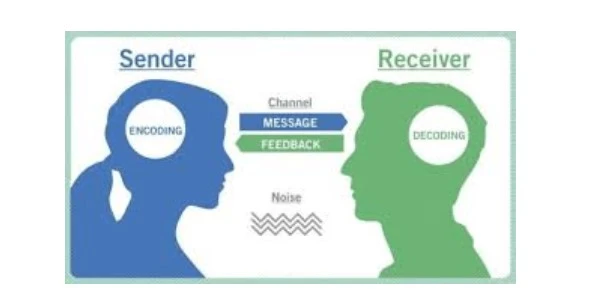Relationship roadblocks: 12 ways of communication that are harmful to your relationship.
What are relationship roadblocks?

Relationship roadblocks are the barriers that dampen or stop the flow of communication between couples. It inhibits love and cause often lead to more estrangements. The stress can quickly trickle through to other aspects of the daily life. It can make people feel unsupported when they are not validated by voicing their concerns.
A message can be a verbal statement or a visual event. We decipher the intended content based on past experiences through these two channels and act or respond accordingly. It seems straightforward, like driving a car. It only becomes a
problem when the car won’t start, which prompts us to investigate further. Relationship roadblocks are only noticeable when communication is broken down.
The infamous 12 Relationship Roadblocks are:
Judgement– the most visible and significantly impactful form of relationship roadblock. When people are faced with uncertainties in their life, placing judgement on them further detracts from their effort to be better. The responses often come in the
following factor:
1. Criticizing– You should be paying more attention in class if you want better exam result.
2. Name-calling– Stop being such a puppy dog. You can stand up to those bullies.
3. Diagnosing– You have signs of the flu, you need medicine and rest.
4. Praising evaluatively– You got this in the bag, you can do it!
Sending Solutions – People are not objects or animals we can fix or heal, so they function again correctly as soon as possible. Attempting to fix or send solutions can diminish the person’s ability to do things for themselves. According to Dr Allan Schwartz, a clinical social worker in Colorado, sending answers or wishing to fix others is a sign of codependency. Codependent people often like to take on the role of a martyr so that they feel needed. Sending solutions can be any of the following:
5. Ordering – Go and mow the lawn.
6. Threatening – If you do not stop your habit then we are over.
7. Moralizing – I would never do something like that. Selfishness will only leave you isolated and unloved.
8. Excessive/ Inappropriate Questioning – Why are you not home yet? Are you doing this on purpose?
9. Advising – You should just quit your job. There are plenty of other jobs that will make you happy.
Avoiding the other’s concerns– Avoidance happens when we feel uneasy about specific topics of conversation. Derailing the conversation can be portrayed as uncaring and instantly make the person feel insignificant. Avoiding deep or uninteresting conversations can make a person withdraw further from reality. It can make a person feel more depressed from being isolated. The act usually comes in the form of the following:
10. Diverting conversation – I’m sorry you are having a bad day. By the way, what is new at the movies? Let’s go cheer ourselves up.
11. Logical Argument – Please stop what you are doing. Just because you give the neighbours gifts, does not mean that they will like you.
12. Reassuring – Relax, you got this in the bag!
Can relationship roadblocks interfere with intimacy?
Yes, it can. Intimacy needs warmth and closeness to thrive in a relationship. The conflict caused by relationship roadblocks can significantly decrease the motivation for couples to engage with one another. There are a few risks to the relationship when couples are not able to communicate:
1. Disconnection from each other. Living together becomes just an arrangement for survival.
2. Feelings of isolation. Couples unable to communicate with each other often find themselves utterly alone.
3. Insecurity. When spouses feel insignificant, they can become more insecure within themselves. Continuous dismissal and rejection can cause them to think the worst of the relationship.
4. Endless arguments and conflicts. Pent-up stress and tension can turn any interaction into a disagreement.
It can be difficult for people to see their parts in the communication breakdown. The mounting frustration and the feelings of unfairness can often be louder than the real issue. Couples often see only the relationship roadblocks in their spouses and often are unaware of their roadblocks. Prolonged emotional battles can be exhausting. Seeking professional help, such as relationship counselling, is a safe place to restart conversations. It requires the ultimate teamwork to work through the problems together.
How to avoid relationship roadblocks?
Avoidance can make people more rigid and hyper-vigilant. But understanding what communication
looks like is an excellent place to start. People use these relationship roadblocks to get their points of view across. Some conversations can be emotionally triggering. Discussions can quickly become a debate when using the wrong choices of words. Relearning how we respond to messages can help us improve communication with our loved ones.
The communication model below shows how we interact daily.

The model highlights the first five parts of the communication process. There are seven parts
to how we receive and respond to messages.
1. Context- What is the message? There are three aspects of the context to consider:
a. Psychological Context – How do you feel when you receive the message?
b. Historical Context- Does this message remind you of an event or a conversation in the past?
c. Physical Context – Whereabouts the message is sent and received.
2. Participants – The sender and decoder. Who are the participants in the conversation? Each participant communicates
based on their experience, attitudes and values.
3. Rules – What are the rules of engagement? If there is none, consider discussing what is acceptable during
conversations so that both parties feel acknowledged.
4. Messages – What is the meaning of the message?
5. Channels – Out of the five sensors we have, we use mostly sound and sight in our interaction.
6. Noise – What is disrupting the focus of the conversation?
a. External factors- loud noises and doing tasks such as cooking, cleaning or working from home can take away attention.
b. Internal factors – Personal bias, thoughts and perception can distort and interfere with the intended message.
7. Feedback- What is the response? Hearing the reply is a good indicator of whether the message is received as intended.
How to overcome relationship roadblocks?
Awareness of relationship roadblocks often brings up guilt, regret and remorse. Some people may find it difficult to admit they have been too harsh on the other person for fear of losing the right to be correct. The roadblocks are usually constructed when they each feel the need to defend their position in the relationship.
Zeigarnik Effect – According to psychologist Bluma Zeigarnik, who discovered the Zeigarnik Effect, our brain can retain memories of unfinished tasks better than our completed tasks. This effect can be the same for resolved issues. “I thought we had discussed this before.” This is a typical statement or thought from a spouse when the same problem arises. The roadblock is beginning to form. Matters are only present because they have yet to be validated correctly. There are many ways to address the concerns without the relationship roadblocks being used. The following are some examples of how to set the scene for the conversation:
1. Be present when you are in a conversation with your spouse. Distraction from doing other tasks can distort
the messages. It can make the person feel less significant for your attention. Try saying, ‘ I am here; tell me, what is worrying you?”
2. Do not assume anything—Check in with your spouse to clarify the message if it is unclear. Pointing out relationship
roadblocks also creates a significant bump in communication. It merely places another judgement on the person communicating their point of view. It can quickly become a nitpicking scenario. Try asking,” Can you clarify what you want me to do?”
3. Practice effective communication using “I” statements. For example,” I feel overwhelmed today because of the
stress at work. Can I have a hug, please?” It tells your spouse where you are emotion-wise and what they can do to help.
4. Make room for conversations to flow. Create a safe space for your spouse to talk, vent and express their thoughts. You can try this statement to make your spouse feel more at ease,” I am here to listen, tell me what you are thinking.”
5. Positive affirmations. Acknowledgement and appreciation go a long way. Show your gratitude for being
in each other’s life. A simple “I hope you have a good day today.” It is enough to brighten their day.

When things get too tense, consider seeking help from professionals. Counsellors can help create the space to clarify the issues from a different perspective. Counselling is also available online, providing convenience for people that have commitments and cannot commit to onsite counselling sessions.

